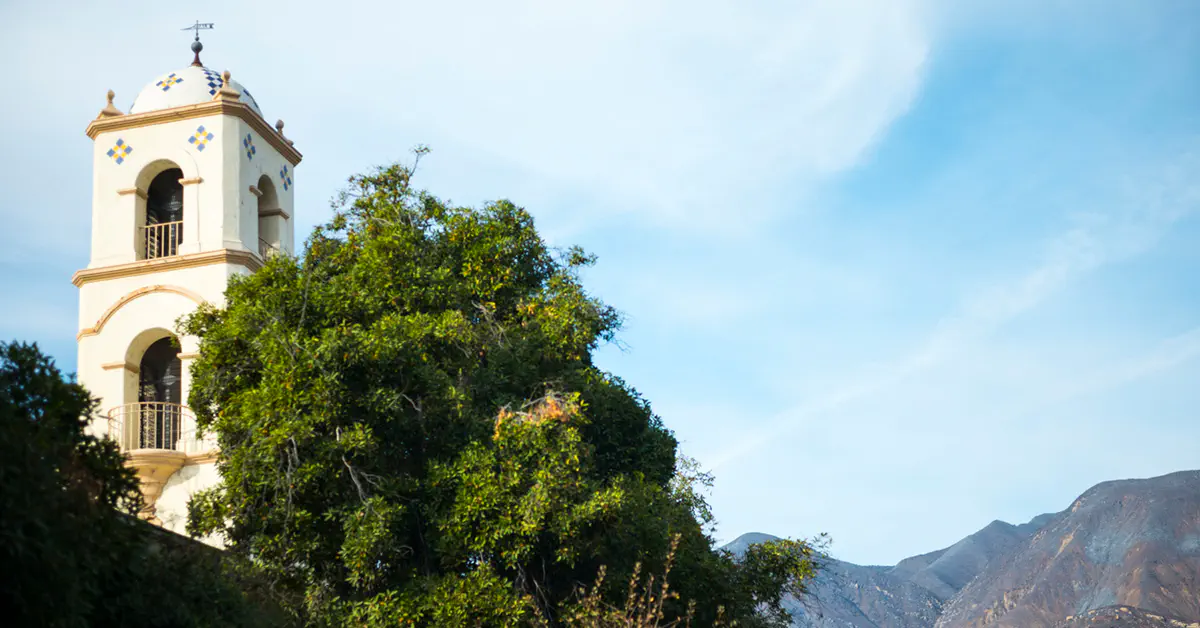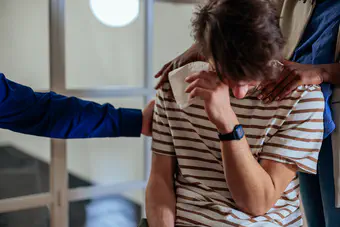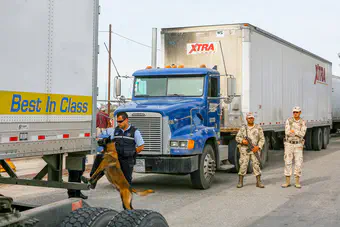Drug Rehabilitation in Ojai

Ojai is a village of 7,600 residents with homes nestled in the Topatopa Mountains overlooking the Pacific Ocean. Ojai’s county, Ventura, has 845,000 residents. Like any other county or village, there are thousands of people in this area who are struggling with drug or alcohol addiction.
To determine how many of these residents might need the help of a drug rehab, we can start by looking at the extent of this problem in all of California. Across the state, it’s estimated that 9% of the California population needs help with addiction.1
Using this figure to calculate Ventura County’s need for drug rehab, we can see that Ventura County needs to find a way to help more than 76,000 people break free from addiction. In a village as small as Ojai, perhaps 70 people need addiction rehabilitation immediately.
Admissions to Drug Rehab Centers
Statewide, more than 96,000 people were enrolled in a drug rehab program of some kind. That means only 2.7% of the estimated 3.53 million people struggling with addiction in California received treatment of any kind, leaving 3.43 million people continuing to struggle with the treatment they need. Since March 2020, the number has increased from 6,540 per year to nearly 12,000.1

More treatment facilities are needed for residents in Ojai, Ventura County and the entire state. Of those who need this type of assistance, 60% of Californians who were in treatment needed help for drugs only. Another 29% needed help for drug and alcohol addiction and only 11% needed help for alcohol alone. In most states, the proportion needing assistance for alcohol addiction is much higher, pointing out California’s severe struggle with illicit drugs.1
Once a person is diagnosed with addiction to either drugs or alcohol, fewer than two in five receive an initial treatment consultation. After that, only 13% receive ongoing treatment. This leaves many people in Ojai and Ventura County suffering on their own.
Drug Rehab Programs in Ojai and Ventura County
There are only 26 drug rehab facilities in this county, with most of them being located in the Oxnard area. There are a few more in Thousand Oaks, Ojai and Ventura. The vast majority of people in drug rehab in California are involved in outpatient programs. These may be insufficient to keep a person from yielding to temptation because of the number of unsupervised hours each person must live through.
There are always support groups or charitable organizations supporting those who strive to recover from addiction. These groups may be short on providing real treatment or having treatment professionals as many are run by well-meaning volunteers or other people who are in recovery. When a community is struggling, however, every bit of help and support is desperately needed.
Many people making the break from an addicted lifestyle need the around-the-clock support of a residential drug rehab program. These are staffed with addiction recovery professionals and many have staff who have been through this battle themselves. No one understands the challenge as well as someone who has faced it and won.
No Shortage of Street Drugs

The desperate burden of so many individuals needing rehab for addiction to illicit drugs could be associated with the floods of drugs passing through California. To the south is the Southern California High-Intensity Drug Trafficking Area. The area brings with it methamphetamine, heroin, cocaine, fentanyl, marijuana, counterfeit pills and more.
To the east a few miles lies the Central California High-Intensity Drug Trafficking Area. The Central Valley has long been known for the methamphetamine labs that are peppered across the rural landscape. Illegal marijuana grows now occupy public lands in the foothills on the eastern edge of the Central Valley.
As an illustration of the state’s overly-ample supply of drugs, in October 2020, eleven people were arrested and 74,000 marijuana plants were seized from illegal grows in the Los Padres National Forest in Northern Ventura County. More than a thousand pounds of harvested marijuana were also seized.2
And in January 2022, officers in the Central Valley seized 75 pounds of counterfeit oxycodone pills that contained fentanyl. These thousands of pills had a street value of $3 million.3
Adding to the problem, there are always medical doctors of suspicious motivation handing out handfuls of opioid pain relievers like oxycodone or Vicodin, benzodiazepines like Valium and Xanax, muscle relaxers like Soma and other addictive drugs. There will be doctors like this in nearly every community in this county, from Ventura to Ojai, and from Carpinteria to Oxnard.
Escaping from the Trap of Addiction
When a person falls prey to this river of drugs traveling through the state, it’s vital that they get the help of their family to bring them back to health. That’s because it is seldom the addicted person themselves that initiates their own drug rehab.
In most cases, the family is instrumental in finding the drug rehab center and arranging for their loved one’s arrival. However, when the addicted person is a professional, it could be the person’s employer that insists on treatment and helps make it happen. In those cases when a person is very good at concealing their addiction, there can be a long wait for this to happen.
Ironically, six out of ten of the top employers in Ventura County are health-related organizations. One hopes that these employers would be quick to identify and support any of their staff or executives who need the help of an effective drug rehab.
Families with an addicted loved one, corporations with valued employees—the sooner they insist on recovery and help the individual arrive at the drug rehab’s front door, the better. An interventionist is often needed to help the addicted person see that today is the day to start returning to a healthy life. With the right support, that turn to recovery can start immediately.
Sources:
-
CHCF. ”Substance Use in California: Prevalence and Treatment.” California Health Care Foundation, 2022. CHCF Publication ↩︎ ↩︎ ↩︎
-
VCStar. “Nearly 75,000 marijuana plants seized from illegal grows in Los Padres National Forest.” VCStar, 2020. VCStar Article ↩︎
-
SFGate. “CHP shares photos from ’largest fentanyl bust’ in Central Valley history.” SFGate, 2022. SFGate Article ↩︎
